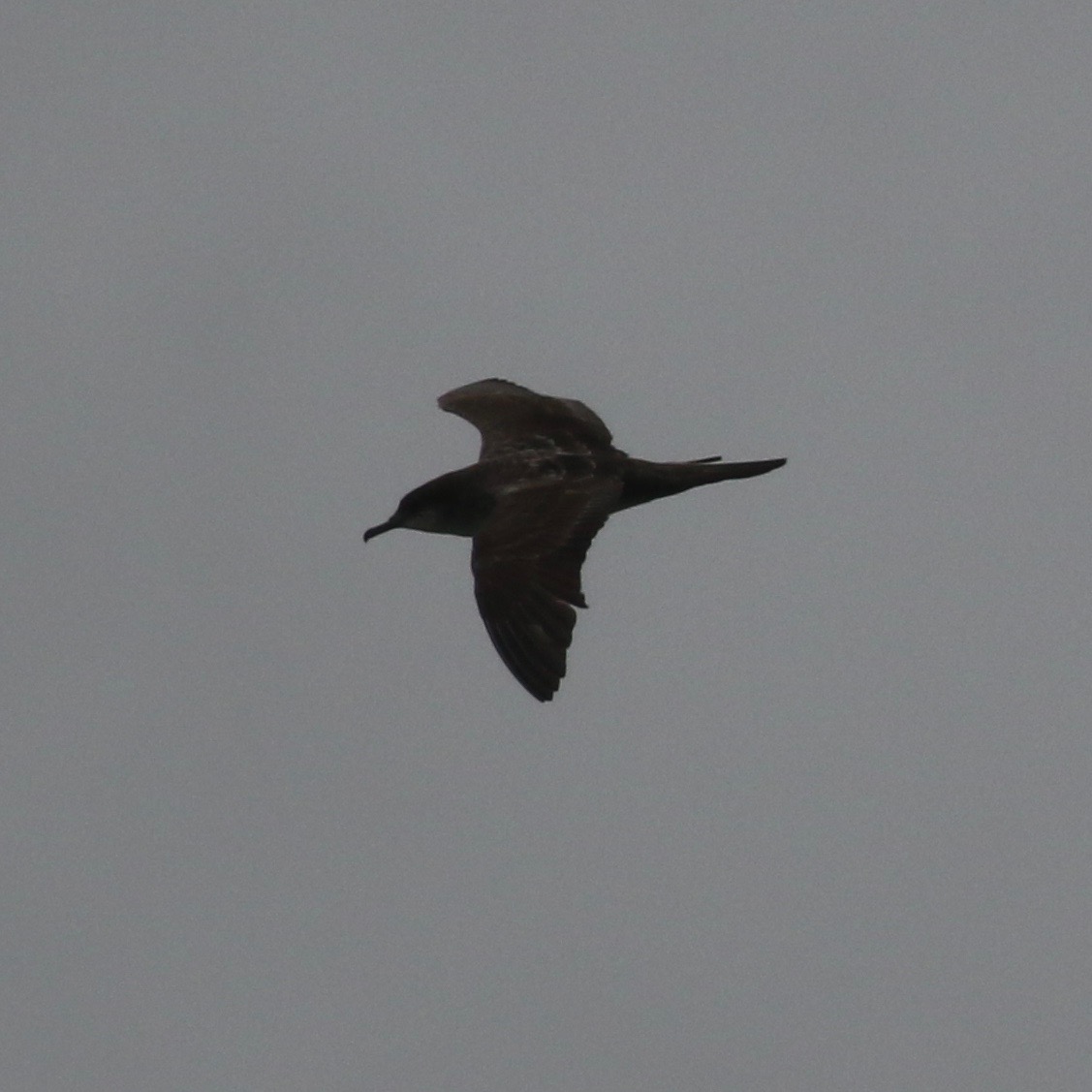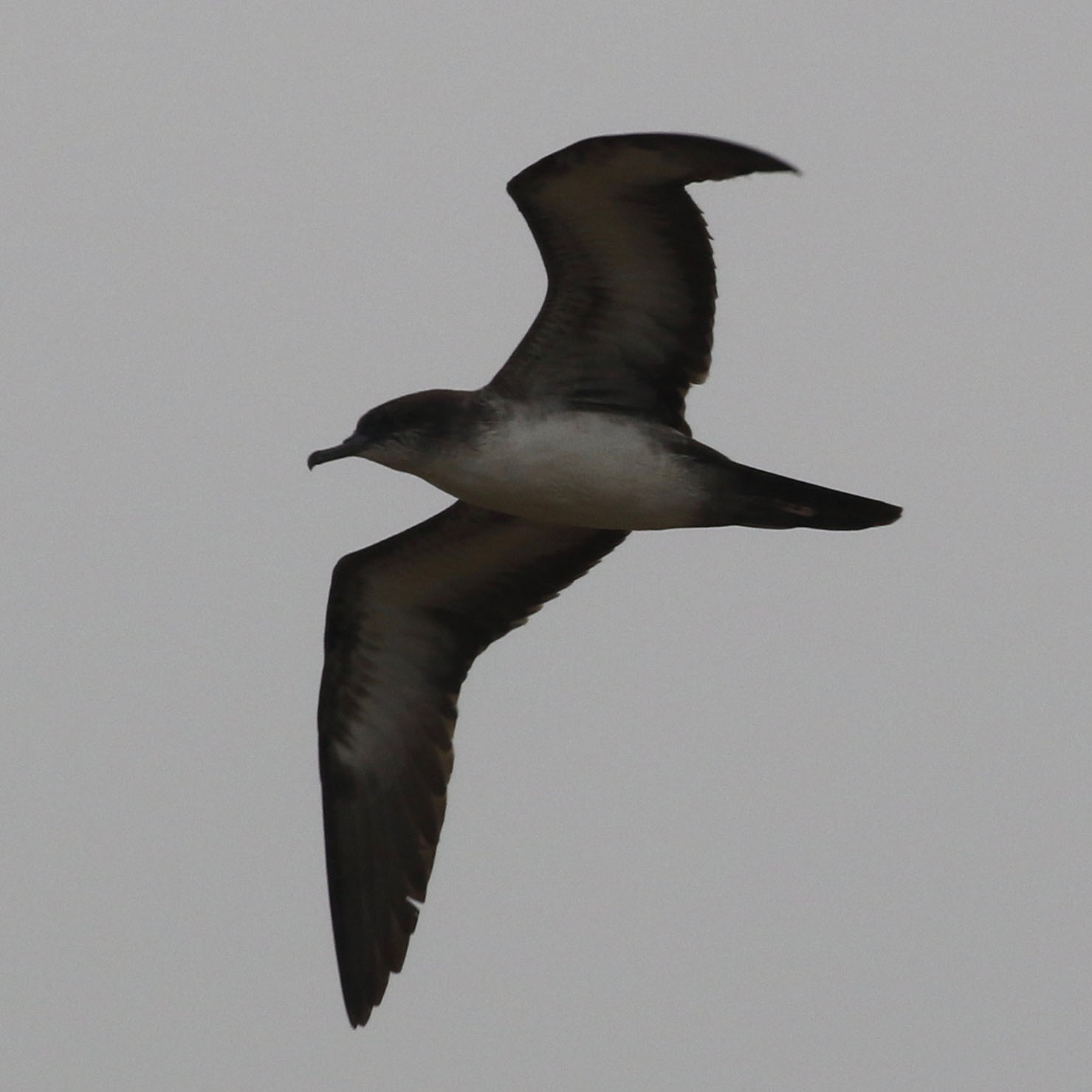 |
 |
|||||||||||||||||||||
|
||||||||||||||||||||||
Wedge-tailed Shearwater (Ardenna pacifica), Amado WTP, Pima County
This Wedge-tailed Shearwater was
found and photographed by Laurens Halsey on 07 September 2016
Hurricane Newton formed roughly 220 mi southwest of Manzanillo, Colima, Mexico on 4 Sep 2016 and reached Arizona on 7 Sep 2016, bringing with it several notable species, including three species new to Arizona and one even new to the ABA area! This storm officially reached hurricane strength winds late on 5 Sep 2016 and reached peak intensity with wind speeds of 90 mph shortly before making landfall at Cabo San Lucas, Baja California Sur. Newton moved north and weakened over the Baja California Peninsula. The eyewall fell apart before it made a second landfall, after crossing the Gulf of California, near Bahia Kino, Sonora where it weakened to tropical storm status. Early afternoon on 7 Sep it crossed into Arizona in a weakened state. Despite the weakened state of the storm it managed to bring 5 species of “tubenoses” to Arizona, typically associated with stronger storms. Clearly we have a lot to learn about how hurricanes affect birds in our area! To see a track of the storm see here and to see windspeeds see here. For more information on the last tropical storm to bring tubenoses to Arizona, Nora, see here.
Potential first state record if accepted by the ABC. Regular off southern Baja California and into the south end of the Gulf of California. Casual off the west coast of the US with ~13 prior records including a dark morph inland at the north end of the Salton Sea, California (not storm related) in late July 1988. Both light and dark morphs have been recorded with light morphs dominating in fall. Breeds abundantly in Hawaii and small numbers also breed off west Mexico. The ratios of dark to light morphs differ in the two populations with light morphs dominating in the Hawaiian populations. Molt timing also differs between equatorial populations and the Hawaiian/Mexico populations. This bird was first observed flying in from the south, flew around the waste water pond for about a half minute, and then veered towards the west crossing Interstate 19 & Arivaca Junction.
A "tubenose" in the family Procellariidae, note the
long tubular body, long slender wings, "tubenose" on the
bill, and the the slender bill which also helps identify
this as a shearwater. The light build, small head, broad
based wings with buldging secondaries, long wedge shape
tail, slender dark bill, dark feet, diffuse dark cap
help identify it to species.



07 September 2016, photo by Laurens Halsey
All photos are copyrighted© by photographerSubmitted on 08 September 2016
|
©2005
|
HOME | | | REPORT SIGHTINGS | | | PHOTOS | | | BIRDING | | | JOURNAL | | | ABOUT US | | | CHECKLISTS | | | AZ BIRD COMMITTEE | | | EVENTS | | | LINKS |